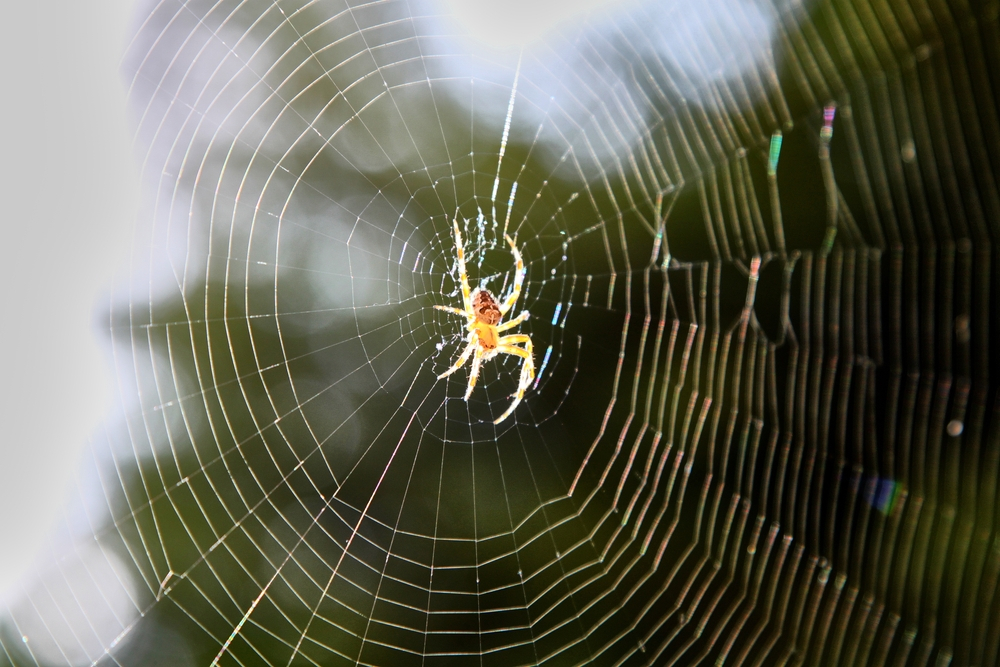Web of Wonders: 10 Mind-Blowing Facts About Spiders

Welcome to “Web of Wonders,” a captivating exploration into the astonishing world of spiders that promises to reshape your understanding and appreciation of these often-misunderstood creatures.
Despite their reputation, spiders play a pivotal role in our ecosystems, acting as both predators and prey, which helps to maintain the balance of insect populations and support the food web.
Beyond their ecological importance, spiders are fascinating beings, boasting capabilities and characteristics that seem to flirt with the boundaries of science fiction.
From the unbelievable strength of their silk to their diverse dietary habits and their complex social structures, spiders harbor secrets that have amazed scientists and nature enthusiasts alike.
This blog post invites you on a journey through the eyes of these eight-legged architects, revealing 10 mind-blowing facts that highlight their diversity, ingenuity, and the extraordinary role they play in our world. Prepare to be enthralled as we unravel the mysteries of spiders, shedding light on their true nature and the countless wonders they weave quietly in the background of our lives.
1. The Diversity of the Spider World
The astonishing diversity of the spider world is something that boggles the mind, showcasing a rich tapestry of life that is as varied as it is fascinating. With over 45,000 identified spider species, this diverse arachnid population inhabits nearly every corner of the globe, thriving in environments ranging from the arid deserts to the lush rainforests.
The sheer range in size is equally impressive, from the minuscule Samoan moss spider, measuring barely 0.3 mm in length, to the giant huntsman spider, whose leg span can stretch up to a staggering 30 cm.
This diversity extends to their appearance and color, which can be vibrantly beautiful or cunningly camouflaged, enabling spiders to blend into an array of environments or dazzle with their hues. Each species has adapted to its unique habitat, showcasing the incredible evolutionary prowess of these eight-legged marvels.
2. Masters of Engineering
Venturing further into the world of spiders, we encounter their remarkable status as Masters of Engineering. The intricacies of spider webs are not merely a testament to their architectural prowess but also to their deep understanding of the materials science behind their silk.
Spiders weave a variety of web types, each serving a unique purpose in their quest for survival. The classic orb web, a masterpiece of geometric precision, is perhaps the most recognizable, designed for efficient catching of flying insects.
Meanwhile, the tangled cobwebs found in corners are crafted by spiders that use a hit-and-run strategy, creating a chaotic trap that confuses and ensnares prey.
Some spiders forgo the web for burrows, lined with silk to detect passing meals, demonstrating the diversity in web usage.
These structures are not just traps but habitats, nurseries, and camouflage, showcasing the spider’s ingenuity in using what might be considered a single tool – silk – in a vast array of applications.
3. Spider Silk: Stronger Than Steel
Among the multitude of fascinating aspects of spider behavior and biology, the incredible strength and potential applications of spider silk stand out, propelling it into a league of its own when compared to other materials.
It’s a well-established fact that certain types of spider silk are stronger than steel of the same thickness, boasting greater tensile strength and elasticity.
This remarkable material is not only tough but also incredibly lightweight, capable of stretching up to five times its original length without breaking.
The unique combination of strength, elasticity, and lightness opens up a plethora of potential applications in technology and medicine.
Scientists are exploring the use of spider silk in bulletproof vests, stronger and lighter than those currently made with Kevlar, as well as in medical sutures that are more compatible with the human body, promoting faster healing and less scarring.
Further applications include its use in creating biodegradable fishing lines, ropes, and nets, and in the fields of tissue engineering and regenerative medicine, where researchers are investigating spider silk’s potential in growing and repairing human tissues and organs.
The sustainable and biocompatible nature of spider silk further enhances its appeal as a revolutionary material in science and technology.
4. Spiders Have Blue Blood
An equally fascinating yet lesser-known fact about spiders is that they possess blue blood, a characteristic that starkly differentiates them from humans.
This distinctive coloration is due to the presence of hemocyanin, a copper-based molecule, in their blood, which functions similarly to the iron-based hemoglobin found in humans. Hemocyanin, however, is more efficient in low-oxygen environments, making it especially beneficial for spiders as it allows for effective oxygen transport throughout their bodies.
Unlike hemoglobin, which binds oxygen within red blood cells, hemocyanin carries oxygen in a dissolved form directly in the blood plasma, turning a deep blue when oxygenated.
This adaptation not only underscores spiders’ evolutionary ingenuity but also illustrates the diversity of life’s solutions to the challenge of oxygen transport, highlighting the complexity and adaptability of these remarkable creatures.
5. The Predatory Techniques of Spiders
Diving deeper into the predatory world of spiders, we uncover a realm dominated by intricate and varied hunting techniques that highlight the adaptability and cunning of these creatures. Spiders have evolved an array of methods to catch their prey, reflecting the diversity and specialized skills of different species.
While some rely on the classic web-trapping strategy, employing their silk as a snare to capture unsuspecting insects, others take a more direct approach.
For instance, jumping spiders exhibit a remarkable strategy, using their excellent vision and agility to stalk and leap on prey, catching it off-guard. Meanwhile, crab spiders camouflage themselves within flowers, patiently waiting to ambush visiting insects.
There is also the fascinating tactic of the bolas spiders, which mimic the pheromones of female moths to lure in male moths, only to catch them with a sticky ‘bolas’ made of silk.
Each of these hunting methods showcases the incredible adaptability and ingenuity of spiders as predators, capable of thriving in virtually any environment by mastering the art of the hunt in their own unique way.
6. Some Spiders are Vegetarian
While spiders are predominantly known for their carnivorous nature, a fascinating exception to this rule exists within the vast diversity of the spider world. The rare Bagheera kiplingi stands out as a primarily vegetarian spider, feeding on the nutritious Beltian bodies of Acacia trees rather than relying on insects for sustenance.
This remarkable dietary deviation not only highlights the incredible adaptability and diversity of spiders but also poses intriguing questions regarding the ecological impact of such choices.
By consuming plant matter directly, Bagheera kiplingi participates in a unique form of mutualism, contributing to the dispersion of plant nutrients and potentially influencing the dynamics of their habitats in subtle yet profound ways.
This vegetarian diet underscores the complex interdependencies within ecosystems, reminding us that nature continually defies expectations, challenging our understanding of predator-prey relationships and the balance of ecosystems.
7. Spiders’ Role in Myths and Culture
Spiders occupy an enigmatic position in myths and culture, woven into the fabric of stories and beliefs across the globe. In folklore and mythology, they often embody qualities such as creativity, patience, and cunning.
For example, in African folklore, Anansi the spider is a trickster god who uses his intelligence and deceit to outsmart others, representing the power of storytelling and wisdom.
Meanwhile, in Native American culture, the spider is depicted as a creator and teacher; the Spider Woman or Spider Grandmother figures in Hopi and Navajo traditions are revered for teaching the people the art of weaving.
The symbolism of spiders varies significantly among different cultures. In some, they are seen as ominous omens, harbingers of misfortune, or even death. In others, spiders symbolize luck, wealth, and industriousness, reflecting their role as master weavers and predators that rid homes and fields of insects.
This duality underscores the profound ambiguity of spiders in human culture, illustrating them as creatures that evoke both admiration and fear, signifying the complex relationships humans have with these fascinating arachnids.
8. Surprisingly Social Creatures
Among the vast array of spider species, a select few exhibit traits that turn the common perception of spiders as solitary predators on its head. These surprisingly social creatures, such as the Anelosimus eximius in South America, live in large, cooperative colonies, challenging our conventional views.
Living communally allows these spiders to construct enormous, complex webs which serve as efficient traps for a variety of insects, demonstrating one of the significant benefits of their social behavior. Such colonies can capture prey much larger than an individual spider could manage alone.
Furthermore, this social structure ensures a higher survival rate for offspring, as the young spiders are protected within the colony and benefit from communal feeding.
The cooperative nature of these spiders highlights not only the adaptability and complexity of spider species but also the benefits of living in colonies, in terms of resource acquisition, defense mechanisms, and breeding success.
This fascinating aspect of spider behavior offers a compelling insight into the benefits of collaboration and mutual aid in the animal kingdom.
9. Incredible Jumpers
Among the diverse capabilities that nature has bestowed upon its creatures, the ability to leap incredible distances is both astounding and functionally significant.
Noteworthy for their remarkable jumping abilities are species such as the kangaroo, known for its powerful hind legs that propel it across the Australian outback, and the tiny but mighty flea, capable of jumping distances over a hundred times its body length.
The mechanics behind these impressive leaps involve a combination of muscular strength, energy storage, and release mechanisms.
For instance, kangaroos utilize the tendons in their hind legs like natural springs, storing energy as they bend and releasing it to jump.
In contrast, fleas achieve their prodigious jumps through the use of a special protein called resilin, found in their legs, which allows them to store and release energy efficiently for their size.
These evolutionary adaptations not only highlight the ingenuity of nature in enabling survival and mobility but also inspire technological advancements in human engineering and robotics, mirroring the biomechanics of these incredible jumpers.
10. Spiders and Humans: A Complicated Relationship
The relationship between humans and spiders has always been complex, marked by a blend of fascination and fear. This fear, often referred to as arachnophobia, is one of the most common phobias.
Despite their intimidating appearance and the discomfort they may cause, spiders play an indispensable role in our ecosystems and even within human environments, by controlling insect populations that can spread diseases and damage crops.
Interestingly, studies have shown that education and understanding about these creatures can significantly reduce the fear they instigate. Learning about their behavior, ecological benefits, and the low risk most species pose to humans helps shift the perception from fear to appreciation.
By recognizing spiders as allies in maintaining ecological balance and understanding their behavior, humans can cultivate a more harmonious coexistence with these incredible arachnids, moving from unwarranted fear to informed respect.
Conclusion
In closing, the world of spiders presents a tapestry of marvels that is as diverse as it is astonishing. From the vegetarian Bagheera kiplingi challenging our perceptions of predator-prey dynamics to the cooperative societies of Anelosimus eximius, spiders illustrate the intricate balance and complexity of nature.
Their cultural significance, stretching across continents and epochs, reflects humanity’s enduring fascination and ambivalence towards these creatures.
Furthermore, their extraordinary physical abilities, such as the impressive leaps of certain species, not only underscore the evolutionary artistry of nature but also serve as a wellspring of inspiration for technological innovation.
It’s easy to overlook the beauty and importance of spiders, focusing instead on common fears or misconceptions. However, as we peel back the layers of misunderstanding, a world of wonder and respect unfolds.
Spiders, in their myriad forms and behaviors, play pivotal roles in our ecosystems and offer invaluable lessons in adaptation, survival, and ecological stewardship. As we have seen, understanding and appreciating these creatures can transform fear into fascination, turning aversion into admiration.
In appreciating spiders, we unlock a deeper appreciation for the complexity and beauty of the natural world. By recognizing spiders as integral components of our ecosystems, we can foster a more respectful and harmonious relationship with these remarkable creatures.
The web of life is indeed a web of wonders, with spiders playing a crucial role in its intricate design. May this exploration inspire you to look a little closer, learn a little more, and marvel at the extraordinary world of spiders that exists quietly, yet profoundly, alongside our own.




